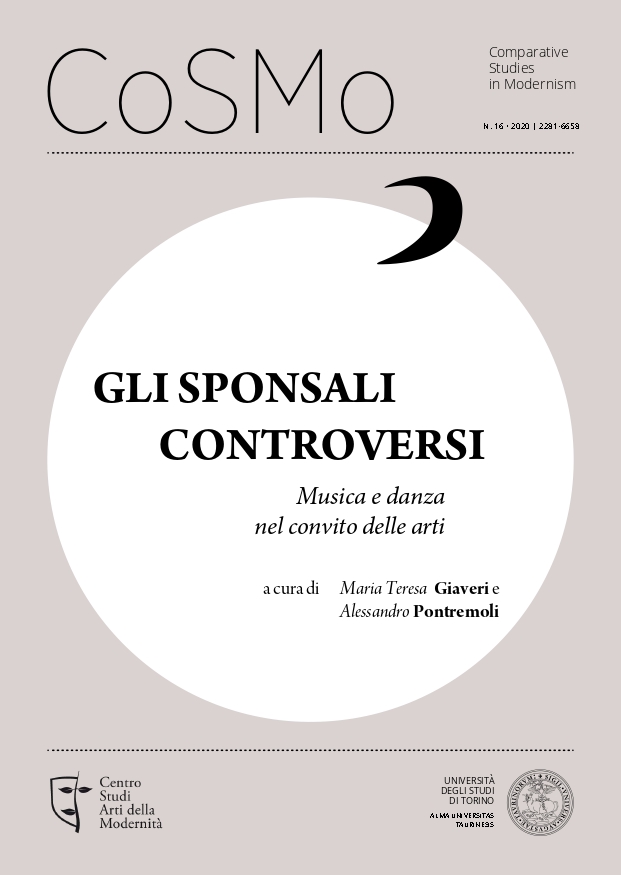The “Prestige” of Mythology: Marcel Proust and the Baroque Festivity
DOI:
https://doi.org/10.13135/2281-6658/4609Keywords:
Marcel Proust, Baroque, Theatre, Festival, Representation, Mythology, Symbolic CapitalAbstract
This paper focuses on one of the most famous episodes of Marcel Proust’s In Search of Lost Time, that is the great choral scene set at the Opera at the beginning of The Guermantes Way (1920). In these pages a link is established between the drama Phèdre, played on the stage by the actress Berma, and what takes place over the audience, in the boxes where the blue-blooded world of faubourg Saint-Germain is staged. To define the fascination that both representations wield on him, Proust employs the term “prestige:” a word originally rooted in the field of magic, as witnessed by many Grand-Siècle writers as well as by 17th-century dictionaries. By investigating the word’s etymology, the paper shows the reasons why the ‘prestige’ of the aristocratic condition is put on display through mythology. Indeed, in Marcel’s eyes, the Princess of Guermantes becomes a sea goddess, Diana, and Juno. In this respect, The Guermantes Way reproduces, metaphorically, what happened in 16th and 17th-century ballets and festivities, in which those in power played the role of the pagan gods, and wore mythological disguises to embody the most ‘prestigious’ symbolic capital of the West.
Downloads
Downloads
Published
Issue
Section
License
Authors keep the copyrights for their work and give the journal the work’s first publication copyright, which is at the same time licensed under a Creative Commons License – Attribution, which in turn allows other parties to share the work with an acknowledgement of the work's authorship and initial publication in this journal.
Content Licence

You are free to copy, distribute and transmit the work, and to adapt the work. You must attribute the work in the manner specified by the author or licensor (but not in any way that suggests that they endorse you or your use of the work).
Metadata licence

CoSMo published articles metadata are dedicated to the public domain by waiving all publisher's rights to the work worldwide under copyright law, including all related and neighboring rights, to the extent allowed by law.
You can copy, modify, distribute and perform the work, even for commercial purposes, all without asking permission.






